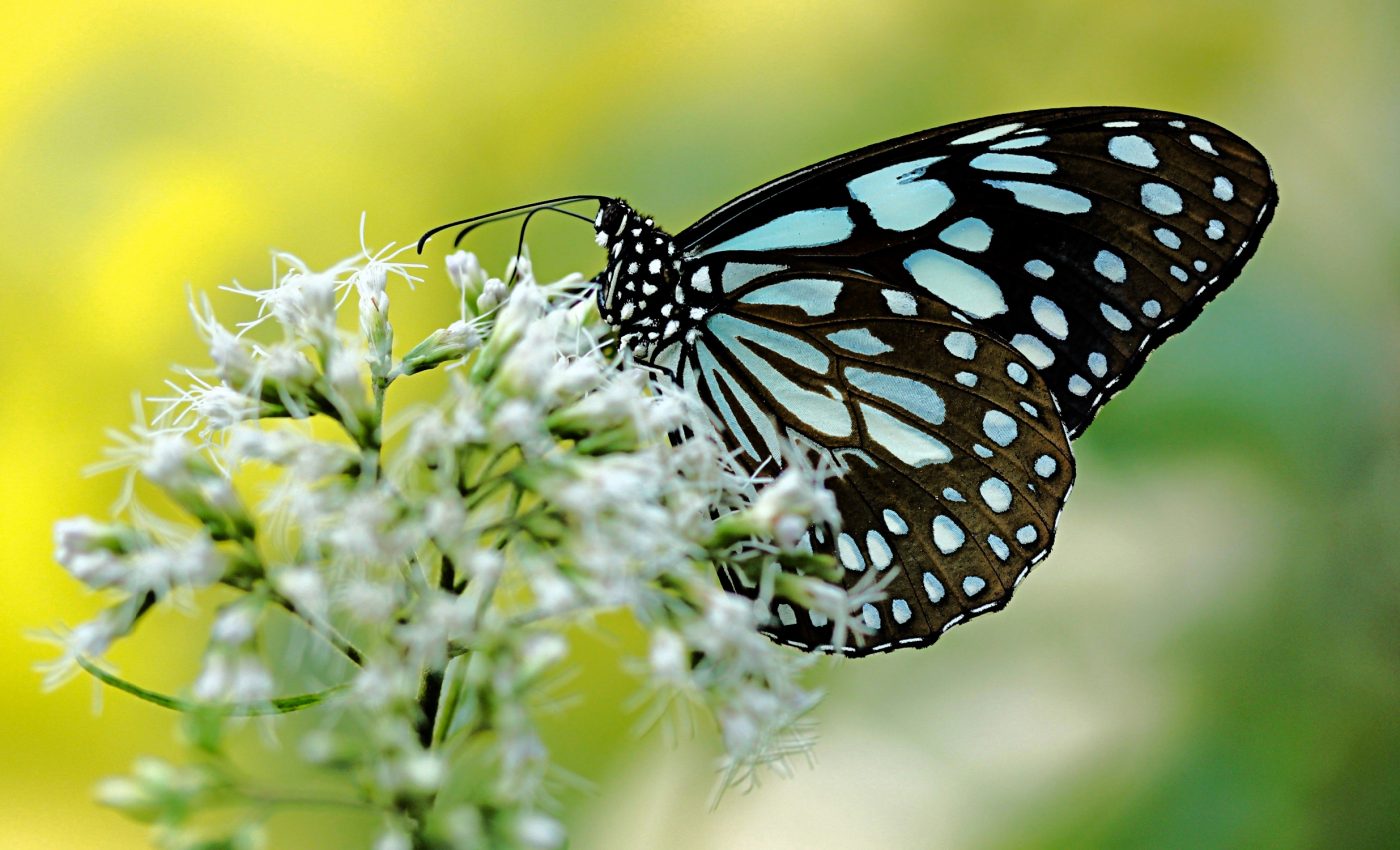
Butterflies use static electricity to catch pollen without touching it
When you think about butterflies and moths, what comes to mind? A peaceful scene of these creatures fluttering around flowers, their delicate bodies brushing against petals while they seek nectar. Well, it’s time to add another scene to that mental canvas — one with static electricity.
New research reveals that these insects amass so much static electricity while in flight that they pull pollen towards them from several millimeters or even centimeters away.
Dr. Sam England from Bristol’s School of Biological Sciences leads a team of researchers that has made this striking discovery.
Butterflies, moths, and static electricity
This fascinating finding holds implications for these insects’ effectiveness as high-efficiency pollinators.
Dr. England’s team also discovered that the extent of static electricity varies amongst different species of butterflies and moths.
These differences align with aspects of their ecology, such as whether they visit flowers, hail from a tropical environment, or are day or night flyers.
This evidence suggests that the quantity of static electricity an animal accumulates is an adaptive trait, making it a candidate for natural selection’s evolutionary process.
Accumulation in butterflies
“We knew many species accumulate static electricity as they fly, likely through friction with the air. It had been suggested that this static electricity might enhance the pollination capabilities of flower-visiting animals, like bees and hummingbirds, by using electrostatic attraction for pollen,” Dr. England elaborates.
So, the intriguing question was whether this principle extends to an array of crucial pollinators such as butterflies and moths. If they, too, accumulate significant charge, could that charge attract pollen onto them?
Factors behind static electricity in butterflies
The team studied 269 butterflies and moths across 11 different species, native to five continents and found in various ecological niches.
Scientists then compared these species to determine whether ecological factors correlated with their charge. This investigation helps establish static charging as a trait upon which evolution can act.
“A clearer picture is developing of how static electricity’s influence in pollination might be powerful and widespread,” Dr. England shared.
“By establishing electrostatic charging as a trait upon which evolution can act, it opens up numerous questions about how and why natural selection might lead to animals benefiting or suffering from the quantity of static electricity they accumulate.”
Invisible power of pollinators
“We’ve discovered that butterflies and moths accumulate so much static electricity when flying, that pollen is literally pulled through the air towards them as they approach a flower,” Dr. England concluded.
These creatures can pollinate without even touching flowers, making them incredibly effective at their job and highlighting their crucial contribution to our ecosystems.
Innovation triggered by nature
This study’s practical implications are far-reaching. Technology might harness this knowledge to artificially increase pollinators or pollen’s electrostatic charges, thereby enhancing pollination rates in natural and agricultural settings.
The insights gained from Dr. England’s study could pave the way for innovative strategies in agriculture, particularly in the context of increasing crop yields.
By manipulating the electrostatic properties of pollen or enhancing the natural static electricity in pollinators like butterflies and moths, farmers could potentially improve the efficiency of pollination processes.
This approach may lead to a reduced need for chemical pollinators and support more sustainable farming practices.
Moreover, understanding how static electricity influences interactions between flowering plants and their pollinators can inform conservation efforts aimed at preserving diverse ecosystems that rely on these critical relationships.
Future research on butterflies and electricity
As the study opens new avenues of inquiry, future research may delve deeper into the genetic and ecological factors that influence the accumulation of static electricity among pollinators.
Investigating the molecular mechanisms behind this phenomenon could shed light on the evolutionary history of these species and their interactions with various plants.
Additionally, examining the effects of environmental changes — such as climate change and habitat loss — on the electrostatic charging capabilities of butterflies and moths will be crucial in assessing the resilience of pollination systems.
This line of research may also contribute to our understanding of how biodiversity loss impacts ecosystem functionality, emphasizing the need for comprehensive conservation strategies.
“For me personally, I would love to do a wider survey of as many different species of animal as possible, see how much static electricity they accumulate, and then look for any correlations with their ecology and lifestyle. Then we can really begin to understand how evolution and static electricity interact!” Dr England concluded.
So, the next time you see a butterfly or a moth flutter by, remember, there’s a whole lot of science in that seemingly simple flight!
The study is published in the Journal of The Royal Society Interface.
—–
Like what you read? Subscribe to our newsletter for engaging articles, exclusive content, and the latest updates.
Check us out on EarthSnap, a free app brought to you by Eric Ralls and Earth.com.
—–













